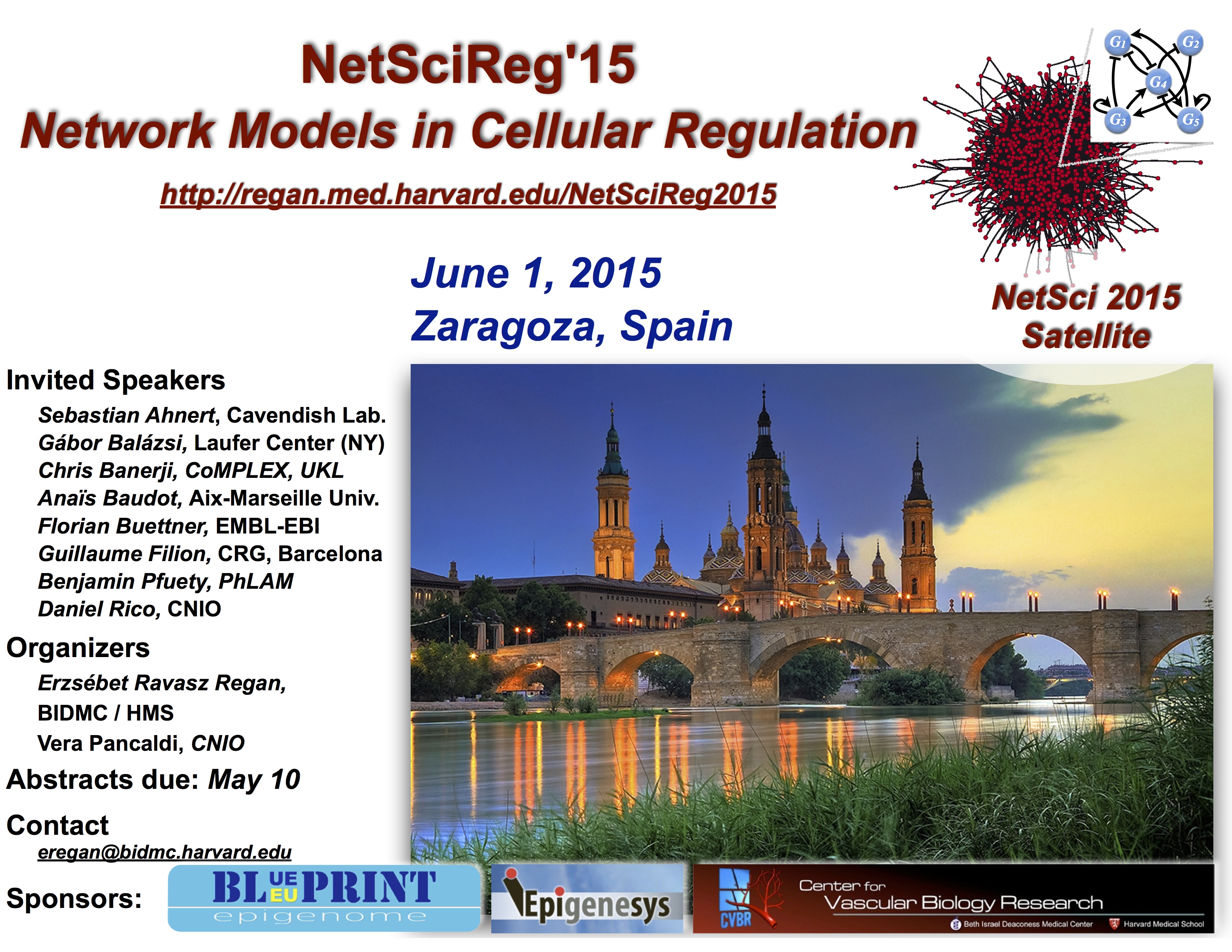NetSciReg'15 - Network Models in Cellular Regulation
June 1, 2015 - Zaragoza, Spain
| Synopsis |
| Program |
| NetSciReg'15 Flyer |
| Important Dates |
| Registration |
| Call for Contributed Talks |
| Logistics |
| NetSci 2015 |
| NetSciReg'14 |
| NetSciReg'13 |
| Sponsors |
|
Time: 10:50 - 11:10 AM
Type: Winning Contributed Talk
Affiliation:
Abstract The circadian system generates an endogenous oscillatory rhythm that offers adaptive advantages to organisms through a coordination of their biological functions with the optimal time of day. Owing to the advancement in molecular biology techniques, many plant circadian genes have been recently identified, forming much complex regulatory interactions compared to the animal cases. With such complexity of the plant circadian interactions, a natural question arises: are all these interactions equally significant to generate the circadian rhythm? To address this question, we first constructed the full mathematical model of the circadian system in plant Arabidopsis thaliana. The model consists of the most up-to-date, experimentally-verified transcriptional regulations and post-translational modifications among the genes and proteins in the plant circadian system. Using this model, we systematically discovered the 'kernel' structure of this system, which is defined as the minimal or core interaction sets necessary for the generation of the clock oscillatory behaviors. The kernel structure successfully reveals a set of essential feedback loops responsible for the circadian rhythms and clearly distinguishes endogenous oscillation generator components and environment-responsive components. Surprisingly, both the full regulatory network and the kernel structure were found to be overwhelmed by inhibitory interactions among the genes, while there exist only few activatory interactions. We here elucidate the dynamical and functional origin of the prevalence of such inhibitory interactions, and our suggested mechanism turns out to be supported by the analysis of animal circadian systems as well. Together, our systematic approach provides the fundamental mechanistic understanding of this important genetic circuitry, highlighting the design principle of the circadian system with implications for synthetic biology. |
SPONSORS: |



